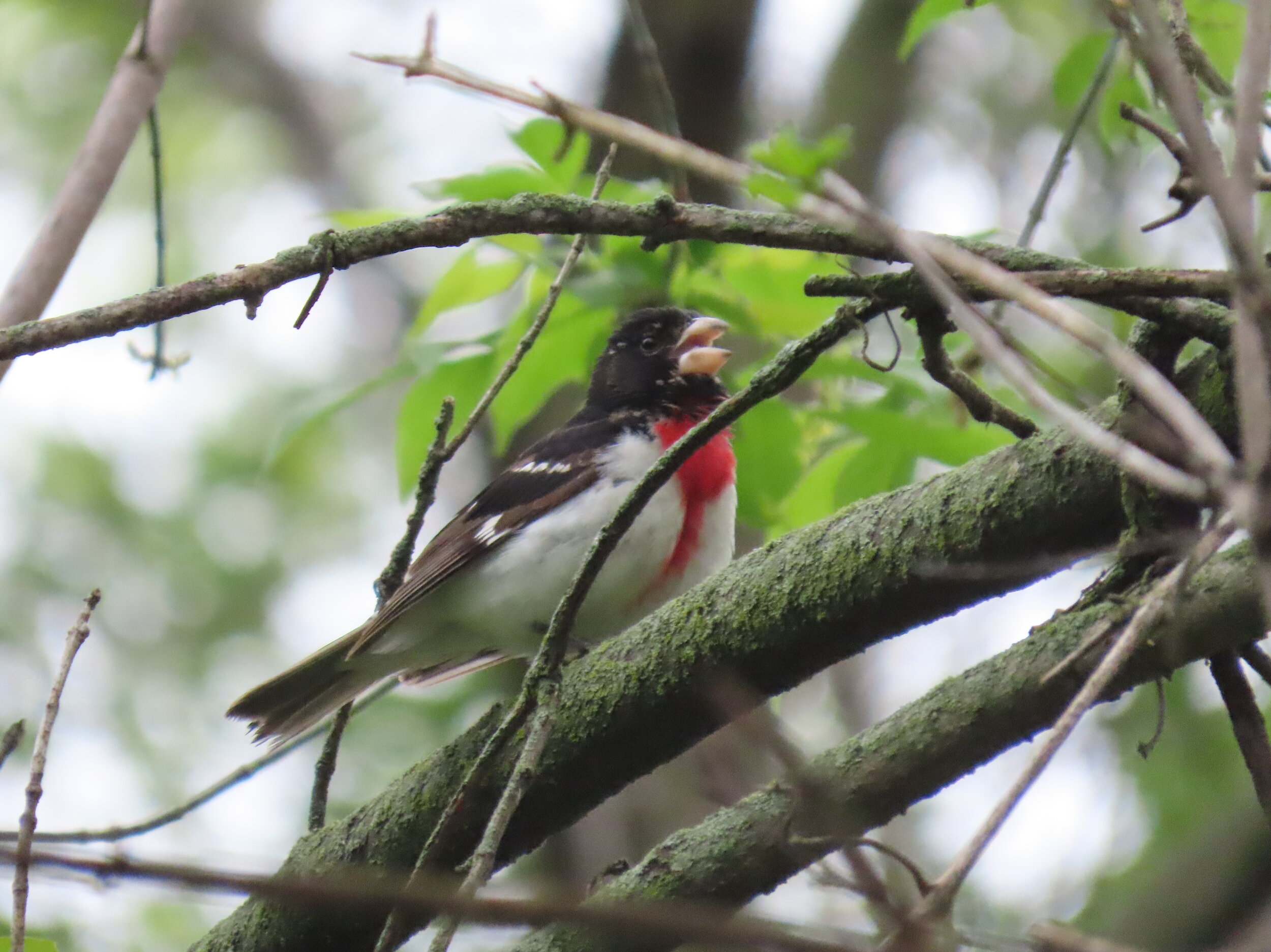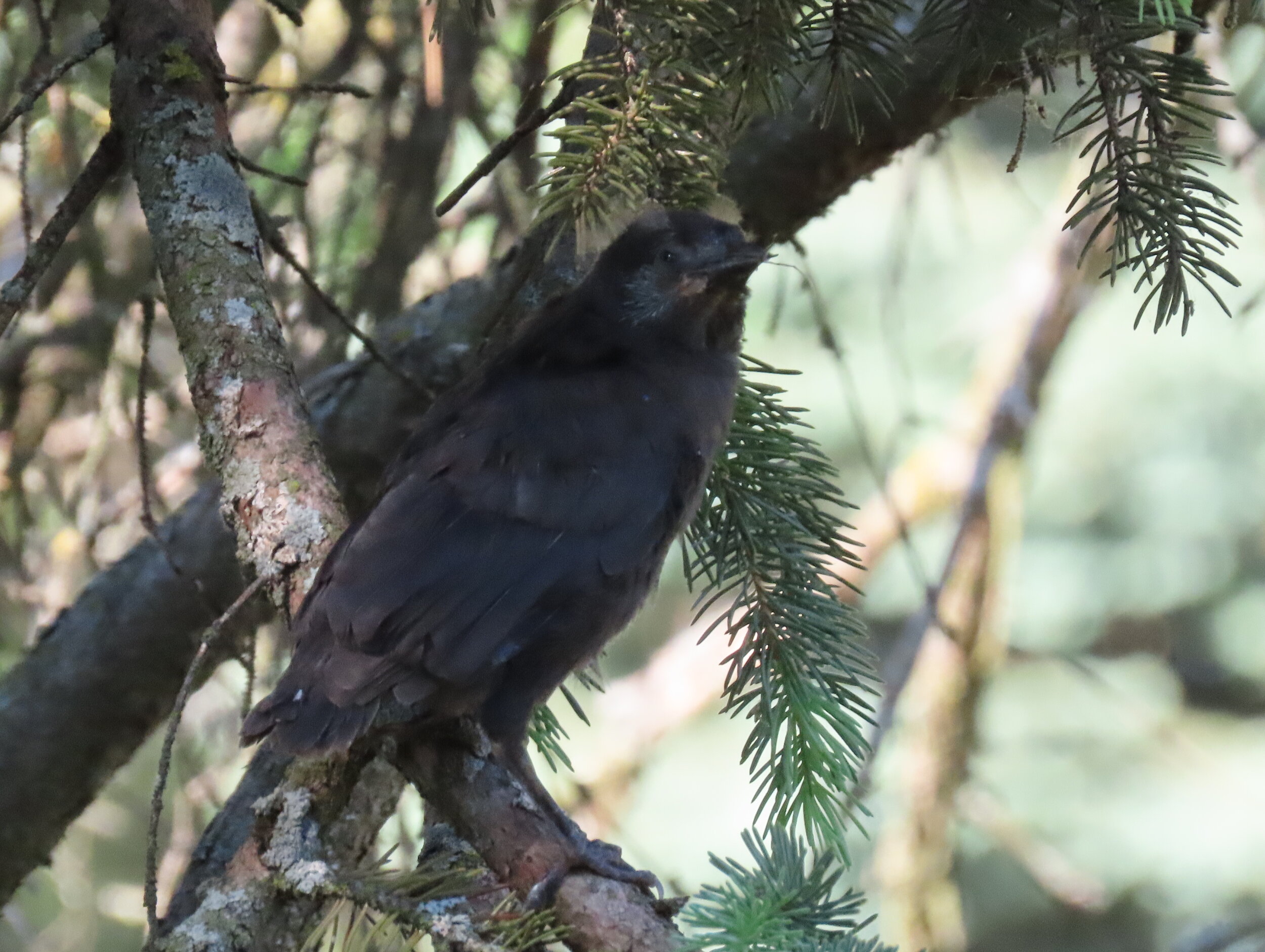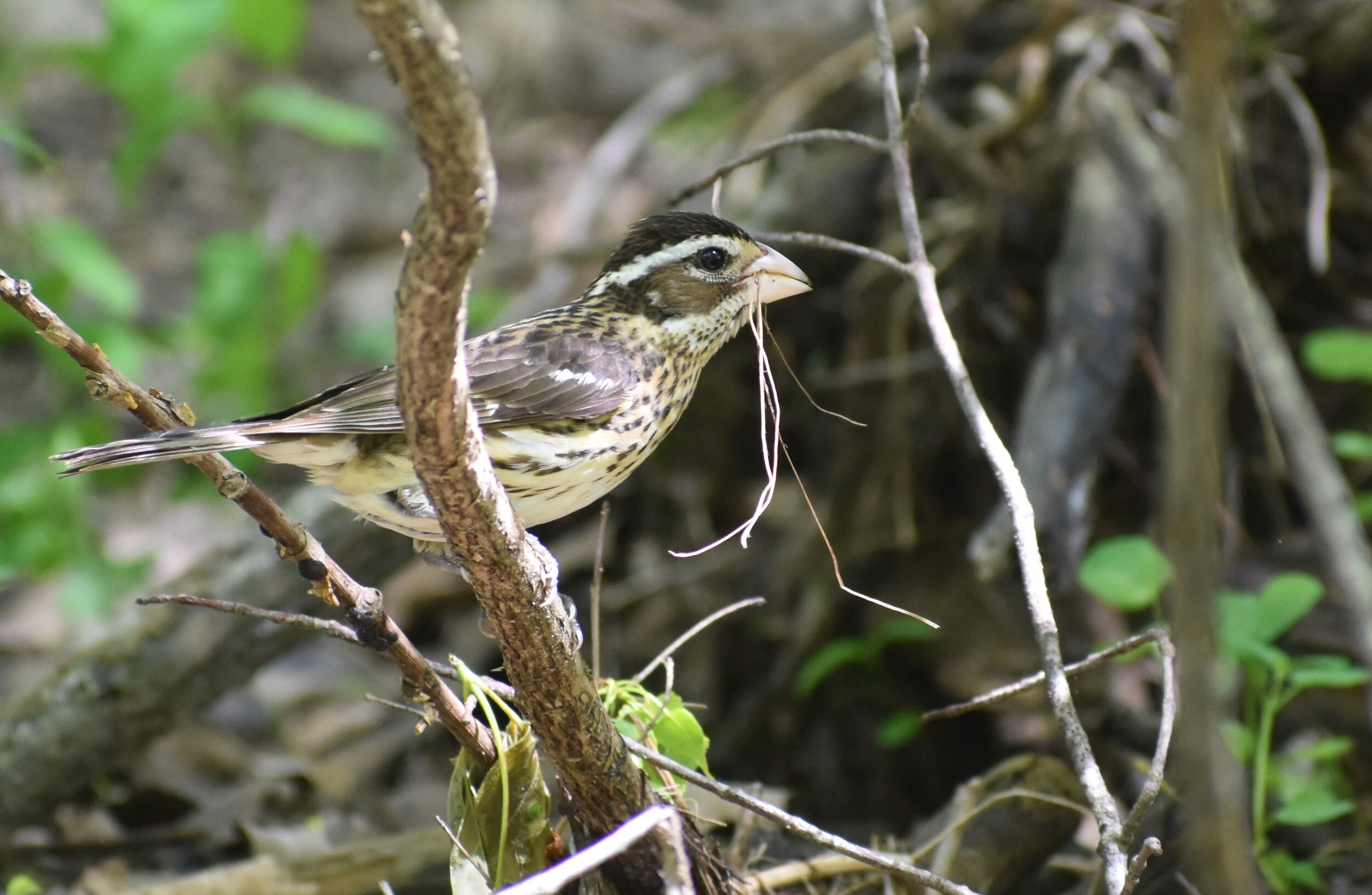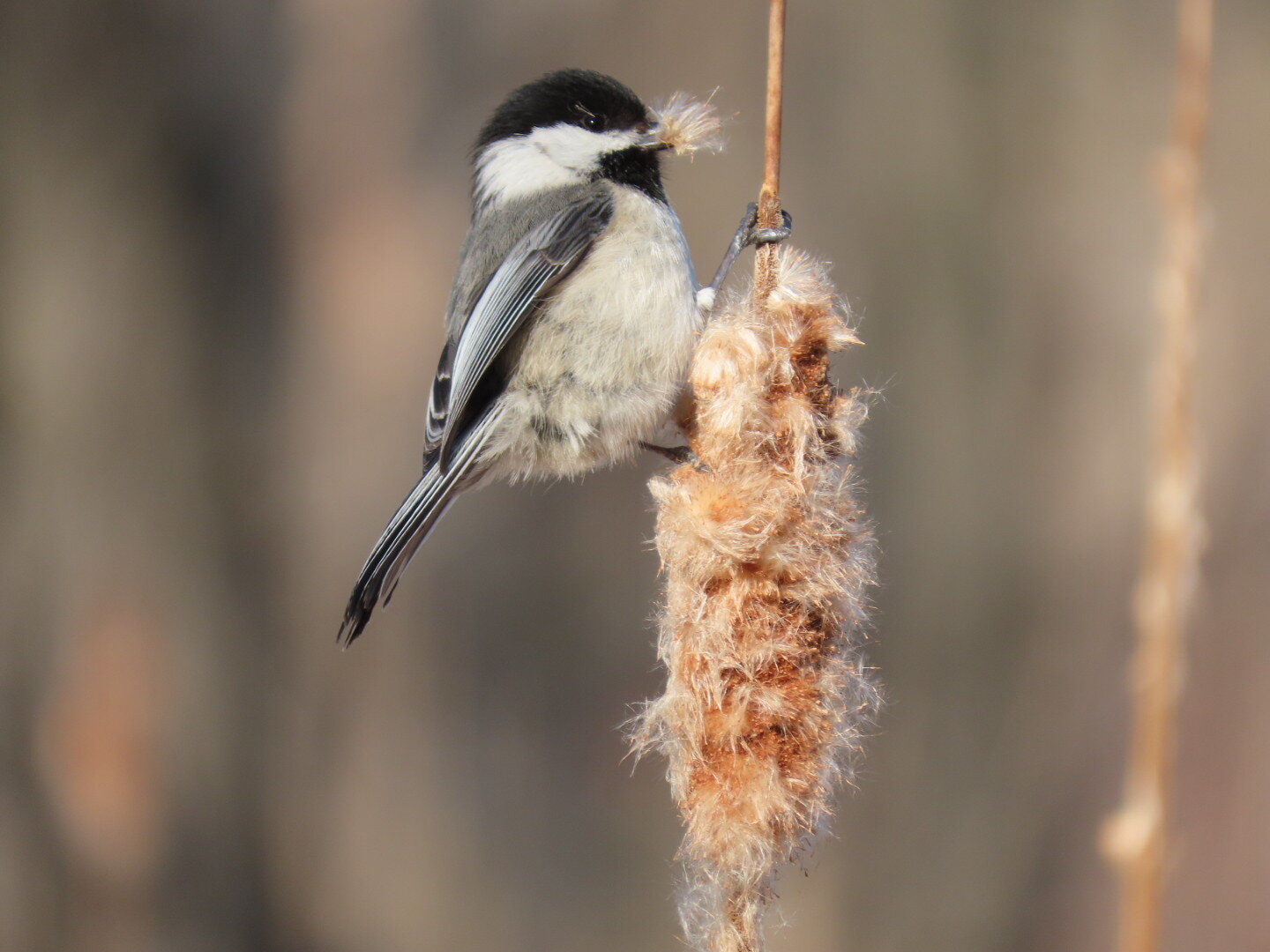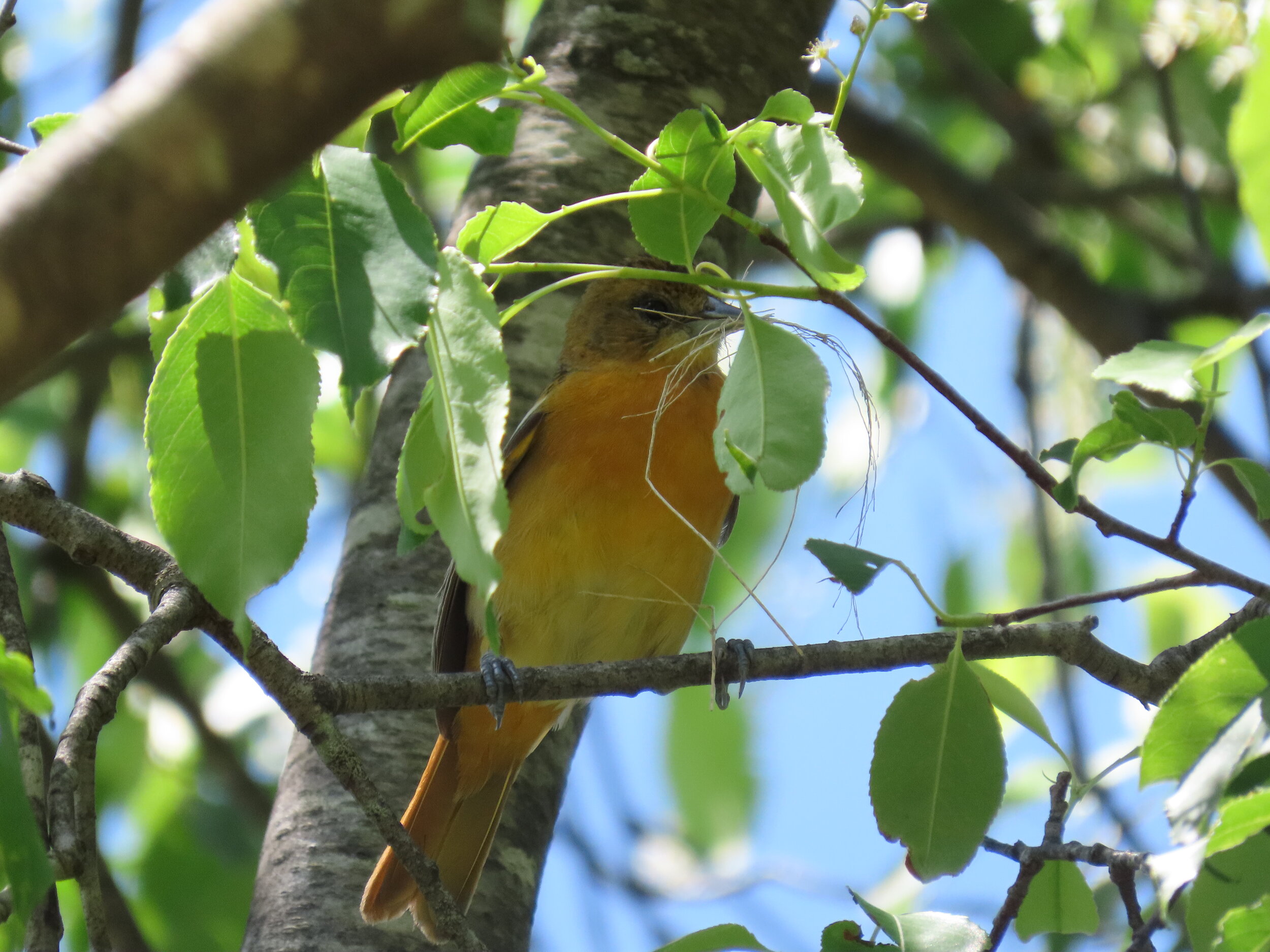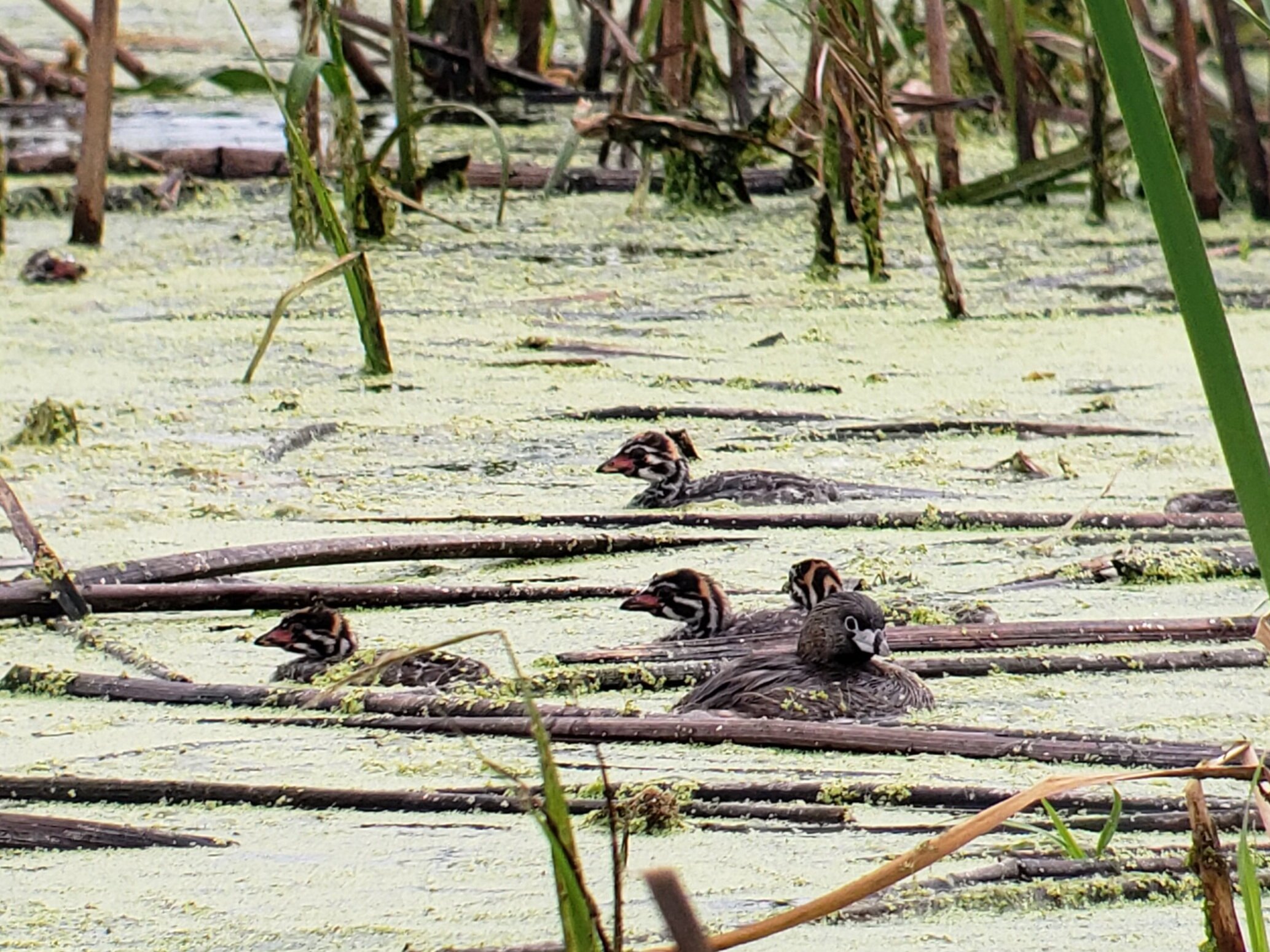Each and every season brings something special for birders. This past March, April, and May was a flurry of excitement as migrating birds made their way through Wisconsin. As a new birder, I was thrilled at seeing all the new species, but also a teeny bit overwhelmed at the challenge of IDing so many new-to-me birds. (Warblers, anyone?! We’ll see how much of my ID skills I retain when they return in the fall … wearing completely different plumage, of course.)
As we’ve rounded the corner into June, things have started to settle down. Many of our migrating visitors have continued to move northward to their breeding grounds, while those who call Wisconsin home have started to nest. As a new birder, it’s been fascinating to watch this shift. I have found that while I am seeing fewer species than I was just a few weeks ago, the behaviors of the birds are changing. I’m seeing them do things that I’ve never seen before, and it’s brought a whole new level of wonder and appreciation for birds and all they do.
So how should a new birder navigate this changing of the season? This week’s Entryway to Birding blog takes a look at the challenges and opportunities that June, July, and August will bring—and how this season can give your birding skills an edge!
A black tern brings food to some hungry youngsters at Horicon Marsh. One of the joys of summer birding is spotting all the new nestlings and witnessing behavior like this! Photo by Brandyn Kerscher
Summer challenges …
There may be fewer birds you struggle to ID in the summer, but this season isn’t without its challenges! I’m going to rank my top three current birding frustrations inspired by the month of June.
Leaves. They are everywhere. Don’t get me wrong—I love that the world is luscious and green, but actually spotting a bird has gotten 10 times harder. Unless they decide to fly into the open and grace me with their presence, I’m relying on my mostly untrained ear.
Chipmunks and/or squirrels. And what ends up fooling my mostly untrained ear? Chipmunks and their assortment of chipping trills. Or squirrels and their squirrelling. I think a new birder rite of passage has to be spending at least 15 minutes standing in the woods trying to ID that weird-sounding bird call that isn’t even a bird.
Begging calls. And, oh, if you think you’ve actually got your bird calls down? Here’s a whole new auditory world of awkward squawks and hollers as young fledglings start calling for food. Now, if I could spot them among the leaves, maybe it wouldn’t be so frustrating…
I am awful at finding nests, but my birder friend Brandyn is not. He captured this photo of a blue-gray gnatcatcher watching over some wide-mouthed chicks in Longenecker Gardens at the UW-Arboretum. Photo by Brandyn Kerscher
… that turn into opportunities
Despite initial frustrations, each of these challenges has been a blessing in disguise. Tackling them has, in small ways, made me a better birder. Here’s how these challenges became opportunities for me to improve my skills:
This is a male rose-breasted grosbeak, but not the leaf-obscured one I saw the other day. He must have been shy. Photo by Caitlyn Schuchhardt
Leaves. Just the other day, I heard a song that sounded awfully like a robin, but not quite. As I waited and watched to see if I could spot the source of the song, I caught a brief glimpse of black and white through the leaves—definitely not a robin, but it was far too leafy to tell what it was! I remembered a tip from Larkwire (a bird song-based game I’ve been playing to improve my song ID) that said that a rose-breasted grosbeak sounds like a robin that’s taken singing lessons. And sure enough, the clear-toned, bubbly song combined with the leafy glimpse of black and white feathers was enough for me to make an ID.
The blessing in disguise: In this situation, the leaves forced me to work through a process to reach an ID—to put together the bits and pieces that I did know—and now I’m more likely to remember the song of a rose-breasted grosbeak next time I hear one.
2. Chipmunks and/or squirrels. I am that birder that spends 10+ minutes staring into the brush trying to spot the bird I hear chipping, only to be fooled by the chipmunk who eventually scurries across the path. I’m getting better, though! I’ve realized one trick is that chipmunks tend to keep chipping away at a steady pace. They’ll go and go and go, where as a bird call usually won’t be repeated that many times at that steady of a cadence.
The lesson here? The more chipmunks (or squirrels!) you get fooled by, the better your ear will get at recognizing the tone and pattern of their many, many calls. I’ve found that when I run across these little guys while out birding, I’ll specifically take time to study them and watch their behaviors and which calls they use. And, bonus! They’re cute and fun to watch too.
As the days went on, this young grackle grew more feathers and got more confident. But notice he’s still got some little tufts of baby fluff on his head! Photo by Caitlyn Schuchhardt
3. Begging calls. Lately I’ve been practicing my birding-by-ear while working inside my apartment with my windows open. I’ve been doing pretty good, but last week I heard something … weird. And incessant. Definitely a bird, but not anything that I recognized as a frequent visitor to my apartment complex. A peek out the window revealed a young common grackle, squawking and hopping directly behind mom or dad as they searched for food in the grass. It was a cute sight, and now I’ve been able to watch the little one and his siblings grow over the week.
Pro-tip: Hearing a new type of bird noise when there are already so many bird sounds to sort through can be challenging, but it’s always worth investigating—because you might stumble across some chicks!
As you search through all those leafed out trees, picking out all those sneaky chipmunks, you might notice that the birds you are seeing may be acting a bit differently. Maybe they’re more territorial, picking fights with other birds or even potential predators (perhaps you!—I know I’ve been dive-bombed by a red-winged blackbird lately!). As we move through June, July, and August, new birders will have a bunch of opportunities to witness bird behaviors and gain even more appreciation and wonder for all that birds do.
The Magic of a Nest
Note: If you find a nest while out birding, take care to enjoy it from a distance. Don’t stress out the parents or do anything that might interfere with the birds. Remember the Code of Birding Ethics and act responsibly—even if it means passing up a cool photo. Birds come first, always.
Birds are busy—this season especially. Finding a mate, finding a spot to nest, building the nest, incubating the eggs, feeding the young, teaching the young … there’s more to it than I imagined. I’m currently working my way through reading Madison Audubon’s Into the Nest series, written by our education director, Carolyn Byers. It’s a fascinating look at the nesting behaviors of grassland birds. You should check it out!
The good news for you as a birder is that you’ll be treated to glimpses of this world. From nest building to incubation to feeding those hungry mouths—if you watch carefully, you might find that a bird you’re observing will inadvertently lead you right to their nest.
What should you look for while you’re out birding? Basically, birds carrying things.
Birds will gather nesting material and carry it back to their nest. Different birds will tend to choose different materials, so you might see them carrying a range of natural materials—from sticks to grass to moss to cattail fluff and more.
Check out these pictures of a female rose-breasted grosbeak, a black-capped chickadee, a female Baltimore oriole, and a lark sparrow all holding nesting material. (I particularly like how the oriole looks like it has a big mustache!)
You might also see birds carrying food. If they’ve got hungry mouths to feed, they may be making very frequent visits to and from the nest. Are you seeing a bird that keeps foraging and then flying back into the same spot? That could be a sign—watch and listen carefully. It may be feeding some young hatchlings.
You might also see a bird carrying some weird goopy white thing as it flies away from a potential nest. That could be a fecal sac! I just learned about these from this Into the Nest entry and they are fascinating. Enjoy this National Audubon article, “What Are Fecal Sacs? Bird Diapers, Basically” for a quick run down on the basics of baby bird poo.
Spring migration may have come and gone. And while I miss all the exciting birds that stopped to visit on their journeys, I’m finding that I’m learning more than ever—and picking up new birding skills!—by observing the birds that are nesting here and now.
And what could be better than looking at baby pied-billed grebes? Look at those little clown faces! Photo by Caitlyn Schuchhardt
Make this the summer that you improve your birding skills. Here are some suggestions to get you started:
Focus in on a few bird species and get to know them really well. Summer has less species variety, so it’s a good time to hone in and study up on field marks. Remember, the best way to learn your birds is one at a time!
Practice your birding by ear. If you can’t catch a glimpse through the leaves, pull out your phone and take a short video to capture the bird song so you can listen to it later and compare. If you can’t find a match, post your video to “What’s This Bird?” with the date and location, and watch an entire birding community help you identify the bird (or the chipmunk!).
Shift your focus from finding new bird species to finding new bird behaviors. Have you seen a bird collecting nesting material yet? Have you seen a new fledgling practice flapping its wings? Have you seen a feeding session?
Birding is the perfect hobby to practice each and every season, because each and every season brings something new. So go on, enjoy the beautiful weather while tackling those birding challenges! You’ll be grateful you took the time to practice when you see how far your ID skills have come.
_____
Caitlyn is the Communications and Outreach Assistant at Madison Audubon. She’s crazy for birds because they changed her life. She’ll be back next Monday with some tips and tools for birders, new and experienced! Between now and then, she’d love to hear about the birds you’re seeing and hearing. Leave a comment below or email to drop her a line!




